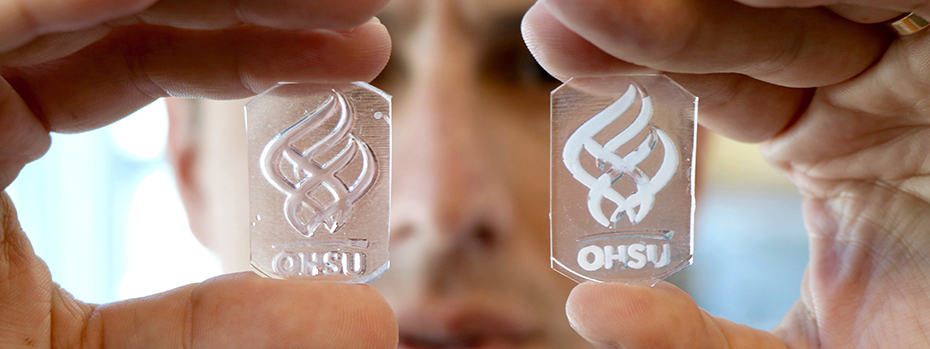Biomaterials and Regenerative Medicine

Our research in biomaterials and regenerative medicine finds new ways to repair damaged tissues, cells and organs. We also develop tissue-engineered models to study disease states as well as potential treatments. Ph.D. students are integral to our work, which has led to new insights and treatments for musculoskeletal injuries, burn wounds, and injuries to the lungs, nerves and spinal cord.
Faculty and students work closely with the OHSU Center for Regenerative Medicine, the Center for Embryonic Cell and Gene Therapy and the Cancer Early Detection Advanced Research Center.
Our projects include:
- Developing stimuli-responsive biomaterial scaffolds that respond to externally applied physical cues, allowing precise control of cell signaling and behavior. Our goals include healing wounds, controlling blood vessel growth and improving functional tissue regeneration. OHSU Ph.D. students have been recognized for their work in this area through multiple awards at the national Society for Biomaterials conference. (Schutt Ibsen Lab)
- Developing dynamic tissue-engineered platforms to model cancer progression starting from its early stages, studying disease progression and developing new ways to detect it earlier. We use 3D bioprinting and advanced biofabrication techniques to study tissue architecture, cell-to-cell communication and mechanical and transport properties of the tumor environment. (Schutt Ibsen Lab)
- Engineering cardiovascular tissues, including small-diameter blood vessel grafts that resist the formation of atherosclerotic lesions, developed by changing the inflammatory potential of endothelial cells lining the blood vessels. We also use devices that imitate physiological systems in order to understand the impact of flow on endothelial cells when complexed with spatial patterning and mechanical gradients. The goal of this research is improved outcomes for grafting and ECMO (Extracorporeal Membrane Oxygenation) devices. (Hinds Lab)
- Generation of cell-free biomaterials to modulate immune system activity via biomechanical, chemical and topographical cues to guide host-driven regeneration and healing. (Nakayama Lab)
- Engineering biomaterials that address the complex tissue damage at the interface of muscle and bone. We use regional spatial, compositional and mechanical cues to differentially regulate cell fate and phenotypic maintenance. The goal is to augment soft tissue regeneration while also restoring load-bearing tissue architecture. (Nakayama Lab)
- Antioxidant nanoparticles for siRNA delivery to modulate fibrogenesis. Nanoparticles can also be used for controlled release delivery of drugs and growth factors to improve tissue engineering and structural strength. (Yantasee Lab)
Join our program
Your research career starts here.